
7 minute read
WELLINGTON
Carter Fountain represents significant legacy
Travellers in and around Wellington often take it for granted what a beautiful landscape we have in the city. At the very centre is a fountain gifted to Wellington. Not just any fountain, but something that has come to be respected by locals and visitors for 47 years, in memory of Hugh Carter, a top Wellington and New Zealand businessman.
Hugh Allan Carter was a man of vision. He wanted a special harbour feature, which the city accepted and dedicated to his name and the Carter family. It has become a legacy over four decades for his foresight and a working symbol of our heritage assets in and around Oriental Bay.
The fountain, which cost in excess of $75,000 in 1973, was gifted to Wellington in memory of Hugh’s parents, George and Ella Carter, who gave much to the city. George Carter was closely associated with the founder of McKenzies Ltd in New Zealand, Sir John McKenzie. Hugh’s mother, Ella, was Sir John’s sister. Hugh was born in Auckland in 1917 and educated at Auckland Grammar. He wanted to be a civil engineer but the depression years persuaded him that accountancy would be more useful. He joined the Queen Street branch of McKenzies in 1935, later rising to become managing director of McKenzies Ltd New Zealand in Wellington in 1969.
During World War Two, Hugh served with the 2nd New Zealand Expeditionary Force for four years in the Middle East and Italy.
He had a great love of water and of Wellington harbour, and had many ideas on how the city could be improved. He made his first donation to the city with money for trees to be planted around Point Jerningham and on Mount Crawford. His parents also paid for the Oriental Bay flower garden.
Fountains and the movement of water fascinated Hugh. He was inspired by the Jet d’Eau fountain he saw on a trip to Geneva, Switzerland, in the early 1960s. Although this fountain was located on a fresh water lake, he was mindful that Wellington harbour, with its salt water, would provide some challenges for the construction engineering team dealing with the corrosion of working parts.
The fountain spouts 16m into the air. A wind sensor on the nearby band rotunda at Oriental Bay prevents the fountain from operating above a given wind speed. Over the years the annual maintenance cost of the fountain and its working parts has been considerable, including electricity and replacing pumps.
ABOVE: Hugh Carter. CREDIT: CARTER FAMILY RIGHT: The Carter Fountain in all its glory during a sporting event. CREDIT: NEIL PRICE/WELLINGTON CITY COUNCIL The handing over ceremony of the fountain to the City of Wellington in March 1973 was marred, two days later, by Hugh’s tragic death when he drowned as a result of a fall into the harbour from his yacht, the Kualani. He was only 55.
The Carter Fountain remains a wonderful legacy to Hugh and all that his family have given to Wellington. At special times of the year the fountain is lit up in coloured lights and imagery recognising calendar events and festivals in the city. During summer it is a centrepiece for swimming and boating events. n
Writer: David Watt
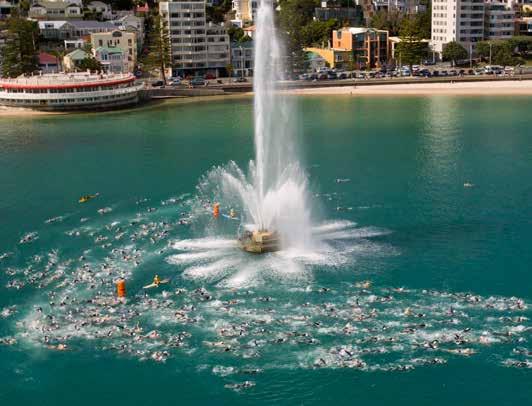
Places telling our stories
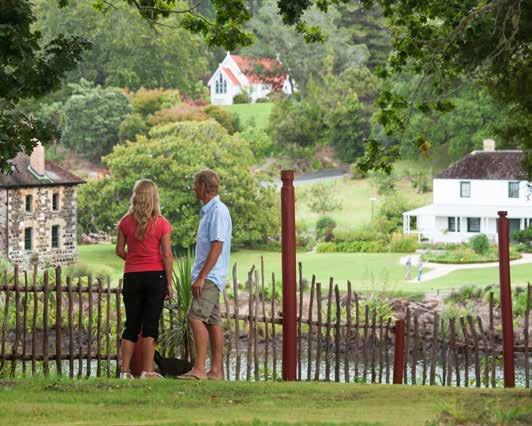
Discover the places that tell our stories. That’s what Tohu Whenua is encouraging New Zealanders to do over summer.

Tohu Whenua identifies some of Aotearoa New Zealand’s best heritage experiences, making it easy to find the places where you can walk in the footsteps of extraordinary and everyday Kiwis, and hear the stories of their deeds, struggles, triumphs and innovations that continue to shape our country.
There are currently 24 Tohu Whenua in three regions, including Northland, Otago and the West Coast. The goal is to eventually roll out Tohu Whenua in all 15 regions of New Zealand. Each region has a unique story to tell.
Te Tai Tokerau Northland – The birth of a bicultural nation Northland’s Tohu Whenua tell the stories of our beginnings. These are the places where Māori and European ancestors arrived, centuries apart, and where their identities were defined and our collective journey as New Zealanders began.
Some of Northland’s Tohu Whenua are well-known favourites: Heritage New Zealand Pouhere Taonga’s own Stone Store at Kororipo Heritage Park and Pompallier Mission and Printery in Kororāreka Russell, and the Waitangi Treaty Grounds which earlier this year opened a new museum, Te Rau Aroha. Others are hidden gems that are slightly off the beaten track. Among these is Rangihoua Heritage Park, just 40 minutes from Kerikeri. It was the country’s first permanent European settlement (including the first Europeanstyle school). The Christian mission was established in 1814 by Reverend Marsden and Ngāpuhi leader Ruatara. Both saw the benefits of two cultures living together. These days well-formed tracks with excellent interpretation lead to spectacular viewpoints over the Bay of Islands and down to the beach where the Marsden Cross memorial marks the place where our first Christmas Day service was held.
Otago – The proof of a pioneering nation Otago’s Tohu Whenua places tell the stories of our pioneering spirit – the cornerstones of our economic and entrepreneurial livelihood.
Born out of necessity, innovations and inventions abound. Take the Kawarau Suspension Bridge near Queenstown, made famous by AJ Hackett as the ‘original bungy jump’. In 1882, the bridge earned its designer Harry Higginson an international engineering award for its innovative strengthening solutions against destructive winds funneling through the iconic gorge.
Then there’s Totara Estate, from where the first shipment of frozen mutton for England was sent in 1882, marking the start of an export industry that’s now worth billions.
The ultimate testimony to ‘Kiwi ingenuity’ must be Hayes Engineering Works near Oturehua, the workshop and homestead of a rural couple who developed and marketed ingenious inventions for pastoral farming such as wire strainers, still used by farmers today.
Opulent Tohu Whenua such as Dunedin’s Larnach Castle, Olveston and Railway Station are evidence of the riches gained through the Otago gold rush and other entrepreneurial activities, and the bounty of wool and grain in the case of Oamaru’s beautifully restored Victorian Precinct.
1: Kororipo Heritage Park in Northland, with the Stone Store and Kemp House in view.
CREDIT: NORTHLAND INC
2: The Waitangi Treaty Grounds, steeped in heritage and history.
CREDIT: WAITANGI TREATY GROUNDS
3: The charm of Arrowtown.
CREDIT: NICOLE KUNZMANN
4: Olveston in Dunedin. CREDIT: NICK BEALE
5: Hard to beat views from the Denniston Plateau.
CREDIT: CLAUDIA BABIRAT
6: Larnach Castle is a standout attraction on the Otago Peninsula. CREDIT: LARNACH CASTLE
Most of these Tohu Whenua are located on the Central Otago Discovery Route, which connects Queenstown with Dunedin via SH85.
Te Tai Poutini West Coast – The rise of a resourceful nation The West Coast’s Tohu Whenua reflect stories of hardships endured for our country’s most prized resources. A region known for its incredible beauty and rich bounty, these are places where limits were tested and rewarded.
Māori came here in search of pounamu, used for weapons, tools and personal ornaments. New Zealand’s ‘pounamu capital’ Hokitika embraces the story of a battle of control for the pounamu source. Today Poutini Ngāi Tahu honour their role as rangatira, carvers and traders of this revered stone.
Gold was what first attracted Europeans to the West Coast. Nicknamed Quartzopolis, Reefton was the centre of commerce that grew from 1870s gold-bearing quartz mining, and today retains its authentic charm with its original School of Mines building, old banks, churches and courthouse. Renowned for being the first place in the southern hemisphere to have commercial electric lighting in 1888, a stop in Reefton should include an overnight stay to see the main street Broadway lit by heritage-style lamps.
The West Coast’s other precious resource was coal. Both Brunner Mine, the site of the
3
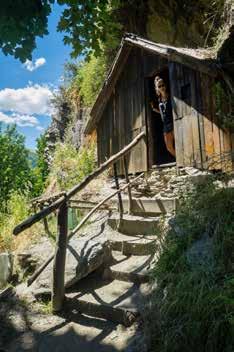
country’s most tragic workplace disaster, and Denniston, once a town of extremes that sat at the top of a steep incline railway, are Tohu Whenua that tell the stories of families whose incredible grit defines West Coasters to this day.
For a full list of Tohu Whenua visit www. tohuwhenua.nz, pick up a regional Tohu Whenua brochure from your i-site, or follow us on social media @tohuwhenua.
4
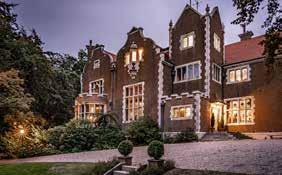
5
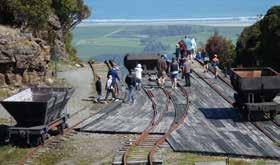
The programme is a partnership between Manatū Taonga Ministry for Culture and Heritage, Department of Conservation Te Papa Atawhai and Heritage New Zealand Pouhere Taonga, with support from the Ministry of Business, Innovation and Employment Hīkina Whakatutuki and Te Puni Kokiri Ministry of Māori Development. n
Writer: Claudia Babirat








